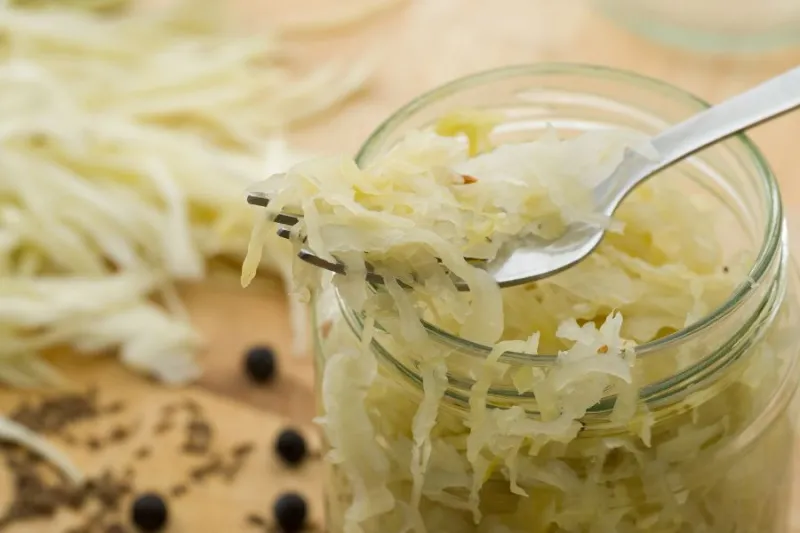Sauerkraut

How to Make Sauerkraut
Adapted from Penn State Extension 2020
Fall is the best time to make sauerkraut as late-season varieties of cabbage contain more natural sugars that help with fermentation.
Cabbage is made into sauerkraut through the process of fermentation. Salt draws liquid from the cabbage and causes the natural sugars in the cabbage to ferment. During this process, friendly bacteria are produced that control harmful bacteria, and the pH (acidity) of the cabbage changes from low acid to high acid. Lactic acid and other minor products of fermentation give sauerkraut its characteristic flavor and texture.
Penn State Extension’s Let’s Preserve: Sauerkraut recommends waiting until frost to make sauerkraut. Although most sauerkraut is made from white or pale green cabbage, it can also be made from red cabbage.
Here are some additional tips for successful sauerkraut making:
Start fermentation the day the cabbage is harvested, if possible.
Shredding the cabbage
- Cut about the thickness of a quarter.
- Use a cabbage shredder or sauerkraut board.
- Cut with a knife.
- Some food processors can be set thin enough.
- Set a meat slicer to 1/16 to ? inch thick.
Salting the cabbage
- Use canning or pickling salt.
These are pure salts with no additives. - Iodized salt and sea salt may cause discoloration and prevent bacterial fermentation.
- Flake and kosher salt are not recommended because their density differs from canning salt.
- Remember to use 3 level tablespoons salt for each 5 pounds of cabbage.
- Measure salt accurately.
- Weigh cabbage.
Tamping the sauerkraut
- Pack with clean hands.
- Use a wooden meat mallet.
- Bruise the cabbage enough to draw out liquid.
Remember:
- Ideal temperature for fermentation is 70°F to 75°F.
- The warmer the room, the more rapidly fermentation takes place.
- An overly warm room (over 80°F) will cause spoilage.
- Sauerkraut may not ferment if the room is too cool.
Doneness or Readiness
- Sauerkraut is ready to use when it reaches the desired tartness.
- Do not taste it if you see mold on the surface, feel a slimy texture, or smell a bad odor.
Choices for long-term storage
- Refrigerator for several months – Preserves probiotics
- Freezing – Preserves probiotics, maintains crispness
- Canning – Heating reduces probiotics, raw pack takes longer to heat process, hot pack may soften sauerkraut
